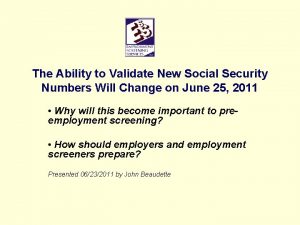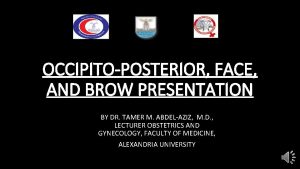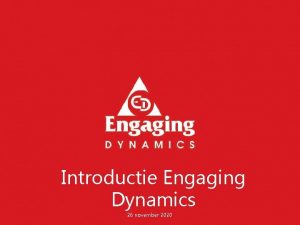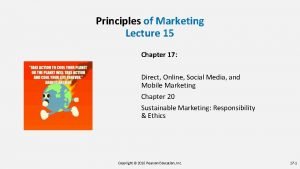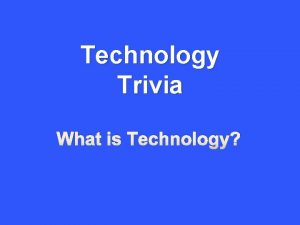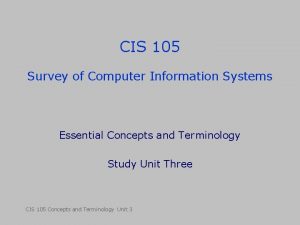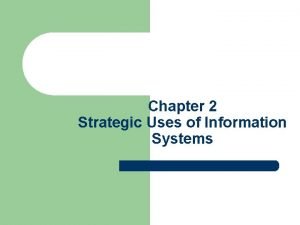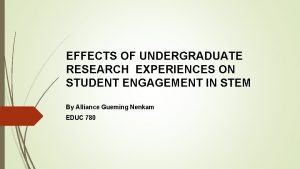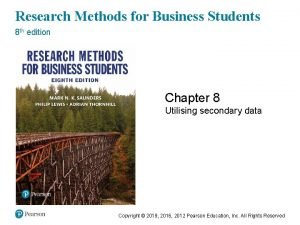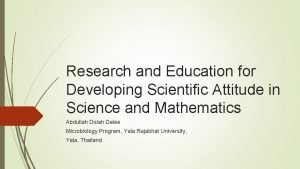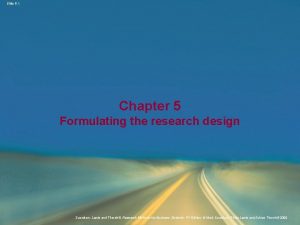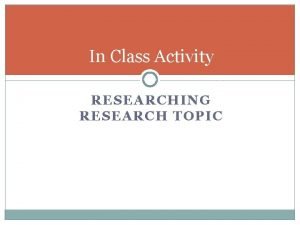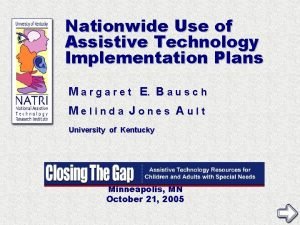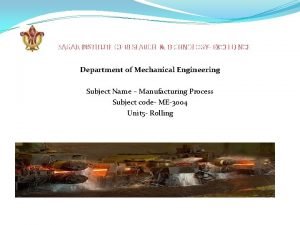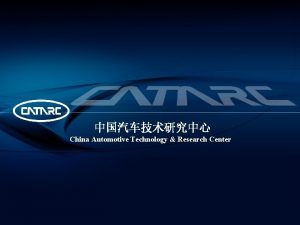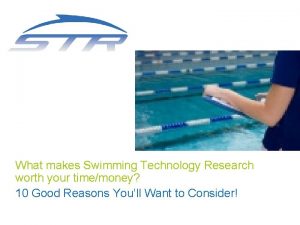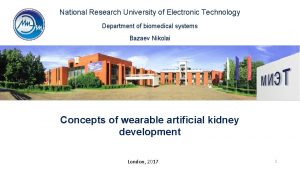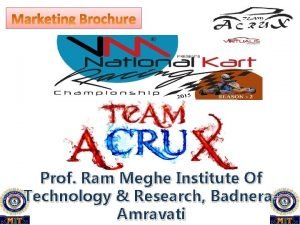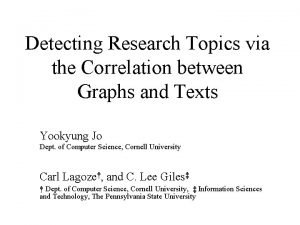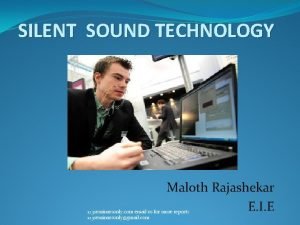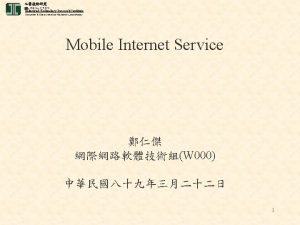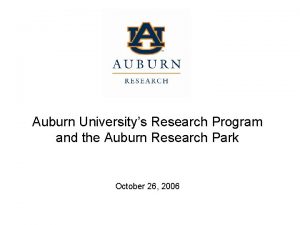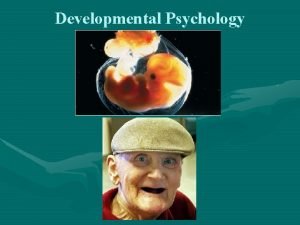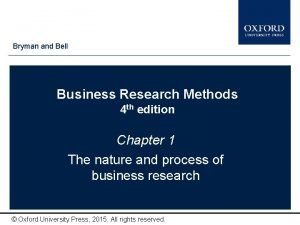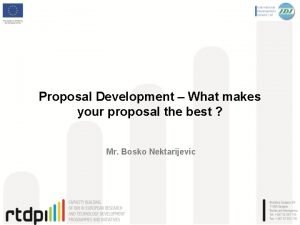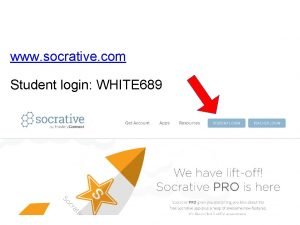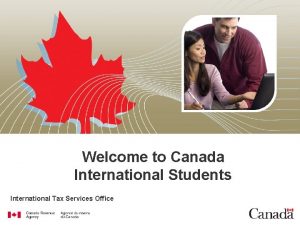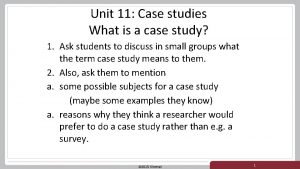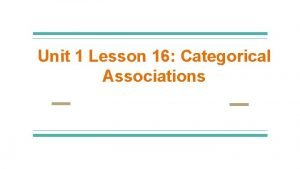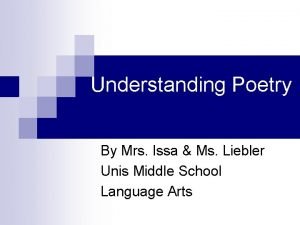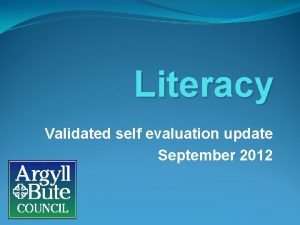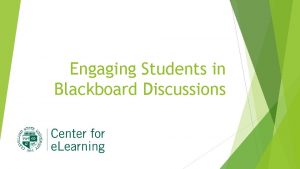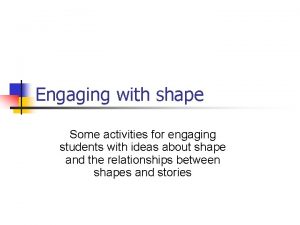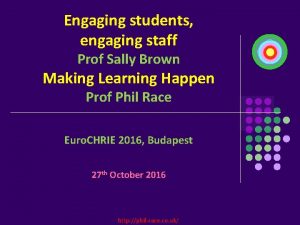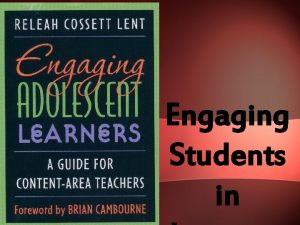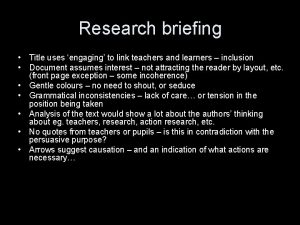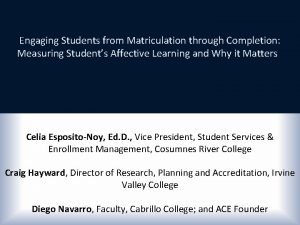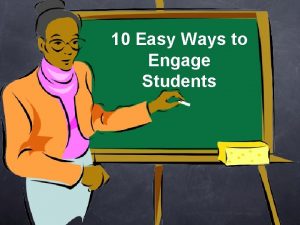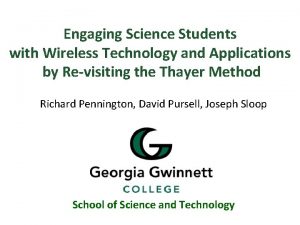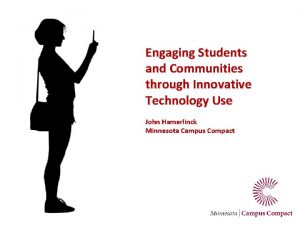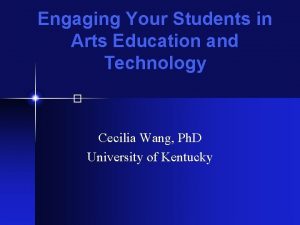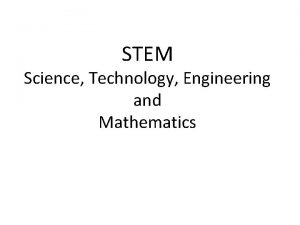Engaging Students with Research Validated Uses of Technology


































































- Slides: 66

Engaging Students with Research. Validated Uses of Technology: Computer Data Acquisition, Video Analysis, Personal Response Systems and Distance Learning David Sokoloff University of Oregon USA USP São Carlos January 23, 2017

Priscilla Laws Dickinson College Nearly 31 years of physics education research, development and dissemination. Winner of the American Physical Society’s 2010 Excellence in Physics Education Award Ronald Thornton Tufts University David Sokoloff University of Oregon

Thank you U. S. Department of Education FUND FOR THE IMPROVEMENT OF POST-SECONDARY EDUCATION (FIPSE) For supporting this research and curriculum development.

Outline Characteristics of active learning environments for university and high school introductory physics. Characteristics of technologies for active learning. Computer-based data acquisition tools (MBL). Research-validated use of clickers. Video analysis. IOLab—computer-based data acquisition for distance learning.

The Problem: PER evidence shows that students taught in a traditional manner do not learn physics concepts! I will not learn concepts in physics class I will not learn concepts in physics class

How can they possibly not learn from my perfectly logical, sublimely entertaining lectures!?

The Proposed Solution Active Learning Environments. . . not replacing, but complementing more quantitative work.

Characteristics of Active vs. Passive Learning Environments. Passive Learning Active Learning Instructor’s role is authority. The physical world is the authority. Instructor’s role is guide. Students' naïve beliefs not challenged. Learning cycle: prediction/ observation/comparison. Challenges students’ beliefs. Collaboration with peers often discouraged. Collaboration and shared learning with peers is encouraged. Experimental results are often presented as facts in lecture. Results from real experiments are observed in understandable ways— often in real time with microcomputer -based tools. Laboratory work, if any, is used to confirm theories "learned" in lecture. Laboratory work is used to learn basic concepts.

Characteristics of Active vs. Passive Learning Environments. Passive Learning Active Learning Instructor’s role is authority. The physical world is the authority. Instructor’s role is guide. Students' naïve beliefs not challenged. Learning cycle: prediction/ observation/comparison. Challenges students’ beliefs. Collaboration with peers often discouraged. Collaboration and shared learning with peers is encouraged. Experimental results are often presented as facts in lecture. Results from real experiments are observed in understandable ways— often in real time with microcomputer -based tools. Laboratory work, if any, is used to confirm theories "learned" in lecture. Laboratory work is used to learn basic concepts.

Characteristics of Active vs. Passive Learning Environments. Passive Learning Active Learning Instructor’s role is authority. The physical world is the authority. Instructor’s role is guide. Students' naïve beliefs not challenged. Learning cycle: prediction/ observation/comparison. Challenges students’ beliefs. Collaboration with peers often discouraged. Encourage students to discuss and learn from each other. Experimental results are often presented as facts in lecture. Results from real experiments are observed in understandable ways— often in real time with microcomputer -based tools. Laboratory work, if any, is used to confirm theories "learned" in lecture. Laboratory work is used to learn basic concepts.

Characteristics of Active vs. Passive Learning Environments. Passive Learning Active Learning Instructor’s role is authority. The physical world is the authority. Instructor’s role is guide. Students' naïve beliefs not challenged. Learning cycle: prediction/ observation/comparison. Challenges students’ beliefs. Collaboration with peers often discouraged. Encourage students to discuss and learn from each other. Experimental results are often presented as facts in lecture. Results from real experiments are observed in understandable ways— often in real time with computerbased tools. Laboratory work, if any, is used to confirm theories "learned" in lecture. Laboratory work is used to learn basic concepts.

Characteristics of Active vs. Passive Learning Environments. Passive Learning Active Learning Instructor’s role is authority. The physical world is the authority. Instructor’s role is guide. Students' naïve beliefs not challenged. Learning cycle: prediction/ observation/comparison. Challenges students’ beliefs. Collaboration with peers often discouraged. Encourage students to discuss and learn from each other. Experimental results are often presented as facts in lecture. Results from real experiments are observed in understandable ways— often in real time with computerbased tools. Laboratory work, if any, is used to confirm theories "learned" in lecture. Laboratory work is often used to learn basic concepts.

At times there seems to be some confusion. . . Active learning requires much, much more than hands-on! Examples: Doing the most fun, exciting and compelling lab experiment is hands-on, but is not active learning if the students are not engaged by predictions and discussion. Eric Mazur’s Peer Instruction involves no hands-on, yet it is active learning.

Characteristics of Technologies that Enhance Active Learning. • • • Easy to use—don’t require a long learning curve. Tools for learning! Flexible and versatile—independent of the experiments. Relatively high accuracy. Results displayed in clear, understandable ways—often in real time. Students can easily appeal to displayed results to justify their conclusions. Enable students to observe physical phenomena directly and clearly, and to learn from their observations.

Computer-based data acquisition tools (MBL) for active learning in lab and lecture Interface Motion Detector Force Sensor Temperature Sensor Current Sensor Voltage Sensor


Active Learning in Lab: Real. Time Physics (RTP) Labs 1. Use computer-based tools to help students construct important concepts while acquiring vital laboratory skills. 2. Guide students to construct models from real observations of the physical world. 3. Sequenced—build upon previous knowledge. 4. Fit within the traditional structure of the introductory course. 5. Include pre-lab preparation sheets to help students prepare. 6. Include homework—to reinforce concepts and skills. 7. Usable with most computer-based data acquisition systems. 8. Instructor’s guides available.

Module 1: Mechanics Module 2: Heat and Thermodynamics Module 3: Electricity and Magnetism Module 4: Light and Optics published by John Wiley

Example from RTP Module 1, Lab 2

Note: Students do real experiments. I did not want to carry the equipment, so I will show you videos or photos of the experiments.


Positive direction



Active Learning in Lecture: Interactive Lecture Demonstrations (ILDs) “Prof. Sokoloff, may I be excused? My brain is full!”

Example of ILDs in Mechanics • I will show you demonstrations and ask you to make INDIVIDUAL predictions on a Prediction Sheet. Note: Predictions are NEVER graded, but points may be awarded for attendance and participation. • Then I will ask you to discuss your predictions with your nearest neighbor(s). See if your small group can reach a consensus on the correct prediction. • Finally, I will do the demonstrations with the results displayed. I will ask you to discuss what you observe with the whole group. • Normally, the demonstrations would be done live in class. Again, I will show you movies or photos of the demonstrations instead.

Prediction Sheet Includes observations like ones with a fan cart

Demonstration #8 Please just make your prediction on a sheet of paper.

Motion sensor


Interactive Lecture Demonstrations (ILDs) 1. Describe the demonstration and do it for the class without results displayed. 2. Ask students to record individual predictions on the Prediction Sheet. 3. Have the class engage in small group discussions. 4. Elicit common student predictions from the whole class. 5. Ask each student to record final prediction on the Prediction Sheet (which will be collected). 6. Carry out the demonstration and display the results. 7. Ask a few students to describe the results and discuss them in the context of the demonstration. Students may fill out the Results Sheet. 8. If appropriate, discuss analogous physical situations with different "surface" features. . This procedure is followed for each of the short lecture demonstrations in each ILD sequence.

I will show more details of ILDs in my short course tomorrow morning.

What Does the Technology Add to RTP and ILDs? • Clearly displayed observations of the physical world, often in real time. • Many of these observations cannot be made w/o computer-based tools. • Enables the active learning pedagogy that helps students to learn from their observations and from each other.

Is learning improved?

Action Research on Student Understanding of Mechanics Concepts Force and Motion Conceptual Evaluation (FMCE) • Uses multiple choice questions based on previous research. • Questions asked in a number of different forms and contexts. • Makes possible tracking of student progress and persistence of learning during a course. • More information will be presented in my short course tomorrow morning.

Comparison of Pre and Post FMCE Results Post ILDs Post-ILDs 74% gain compared to pre-test Pre. Instruction Post Traditional Instruction 8% gain Post-RTP 88% gain compared to pre-test 74% Gain

Characteristics of the Curricula that Make Them Effective • Making predictions requires students to consider their beliefs before making observations of the physical world. We build upon the knowledge that students bring into the course. • The process of prediction, defending the prediction in a small group, and writing down the prediction engages students. They want to know the result. • The disequilibrium set up by the difference between prediction and observation inspires effective learning opportunities. • Student knowledge is constructed from observations of the physical world, thus building students’ confidence as scientists.

Research-validated Use of Clickers for Active Learning in Lecture

Just about every physics department in the U. S. has a personal response (clicker) system! The question is, what are effective (research validated) ways of using clickers to improve learning?

Example of Low-Tech ILDs on Image Formation with High-Tech Clickers • PER shows that students don't understand that an infinite number of rays emanate from each point on an object. • For a perfect lens, all rays from a single point on an object that are incident on the lens will be focused to the same point on the image. • In these ILDs, two miniature light bulbs are used as two discrete object point sources of light. • Here’s how these ILDs look with clickers.



Image location

Modified ILD Procedure for Use with Clickers 1. Describe the demonstration and do it for the class without results displayed. 2. Ask students to record individual predictions with the clickers. Do not show histogram of class’s predictions. 3. Have the class engage in small group discussions. 4. Ask students to record individual predictions again with the clickers. Display the histogram of class’s predictions. 5. Carry out the demonstration and display the results. 6. Ask a few students to describe the results and discuss them in the context of the demonstration. Students may make notes on the demonstration in their notebooks. 7. If appropriate, discuss analogous physical situations with different "surface" features. .


Block half of lens Whole image, dimmer

Block half of object Half of image not formed

Clicker Results After Traditional Instruction (First Histogram) D

Results After Small Group Discussions. . . note effect of peer discussion D

Do students learn concepts from Image Formation ILDs? The Light and Optics Conceptual Evaluation (LOCE) Same type of multiple choice conceptual evaluation as the FMCE.

Image Formation Questions from the LOCE Questions 1 -6 refer to the picture on the right. A stamp is placed to the left of the lens, and its image is formed on a screen to the right of the lens, as shown. Choose the correct answer for each question.

Image Formation Questions from the LOCE Questions 1 -6 refer to the picture on the right. A stamp is placed to the left of the lens, and its image is formed on a screen to the right of the lens, as shown. Choose the correct answer for each question. Questions ask what will happen to the image if changes are made, e. g. , block half the lens, block half the object, remove the lens. . .

Comparison of Pre and Post LOCE Results Post ILDs Pre. Instruction Post Traditional Instruction 20% gain Post Clicker ILDs 59% gain compared to pre-test Post Paper and Pencil ILDs 80% gain compared to pre-test 74% Gain Learning gains using clickers are still very dramatic!

51. In the picture below, the object is to the left of the lens, at a distance from the lens that is larger than the focal length. The image is formed on a screen to the right of the lens as shown. Four rays of light are shown leaving points on the object. Continue those four rays through the lens to the screen. lens object image on screen focal point After traditional instruction After one lecture of clicker ILDs 33% correct 76% correct

Video Analysis for Active Learning in Lab and Lecture

Example from RTP Module 3: Electricity and Magnetism Doing electrostatics experiments is very difficult, and nearly impossible to do quantitatively.

Uses a video to examine Coulomb’s law.

After doing a number of static electricity activities involving Scotch tape, hanging styrofoam, nitrile gloves, etc.



IOLab Relatively inexpensive (100 USD) computer-based data acquisition device designed by Mats Selen, University of Illinois, and developed by Mac. Millan Publishing. Makes it possible in theory for students to own their own individual device (like a personal response device— clicker), and do hands-on laboratory, pre-lecture and homework activities at home. Our current research project is exploring the adaptation of RTP labs to distance learning labs using the IOLab.

More Details about IOLab • Wireless unit with USB dongle, range 30 m. • Rolls on 3 wheels along Yaxis. • Optical encoder measures displacement, velocity and acceleration. • Real time data collection with simple data analysis tools. Includes • Force sensor • Light intensity sensor • Atmospheric pressure sensor • Microphone • Temperature sensor • 3 D Accelerometer • 3 D Magnetometer • 3 D Gyroscope • + More

A Simple Example of the Use of IOLab: Pushing and Pulling on IOLab’s Force Sensor Predictions

Directions and Data Collection Displayed Next to Each Other on the Screen Note: Shape of a vs. t resembles F vs. t!

IOLab project continues—stay tuned!

Technology can help to put your students at the center of the active learning process. . . when it is combined with robust, active learning curricula! Thank you for your attention!
 Validated system integration
Validated system integration Cpn ssn validator
Cpn ssn validator Fundal level
Fundal level Engaging dynamics
Engaging dynamics Marketing involve engaging directly with carefully targeted
Marketing involve engaging directly with carefully targeted Marketing involve engaging directly with carefully targeted
Marketing involve engaging directly with carefully targeted Rizal's salute to luna and hidalgo
Rizal's salute to luna and hidalgo Technology trivia
Technology trivia A named collection of data on a storage medium
A named collection of data on a storage medium Vertical information systems
Vertical information systems Importance of research in students
Importance of research in students Research methods for business students 2019
Research methods for business students 2019 Benefits of research to students
Benefits of research to students Qualitative research examples for students
Qualitative research examples for students Research problem example for students
Research problem example for students Research problem example
Research problem example Research problem statement and objectives examples
Research problem statement and objectives examples Research methods for business students chapter 5
Research methods for business students chapter 5 Narrow down the topic
Narrow down the topic Example of research problem
Example of research problem Research statement of the problem example
Research statement of the problem example Example of problem statement in research proposal
Example of problem statement in research proposal Boeing research and technology
Boeing research and technology Assistive technology implementation plan
Assistive technology implementation plan Sagar institute of research and technology
Sagar institute of research and technology China automotive technology and research center
China automotive technology and research center Swimming technology research
Swimming technology research National research university of electronic technology
National research university of electronic technology Prof ram meghe institute of technology and research
Prof ram meghe institute of technology and research Technology research topics
Technology research topics Boeing research and technology
Boeing research and technology Silent sound technology
Silent sound technology Communication research
Communication research Auburn research and technology foundation
Auburn research and technology foundation Research report vs research proposal
Research report vs research proposal Research design vs research method
Research design vs research method Appendices in research
Appendices in research Conclusive and exploratory research
Conclusive and exploratory research What is applied research
What is applied research Qualitative research
Qualitative research Contrast applied research and basic research
Contrast applied research and basic research What is the research problem
What is the research problem Research instrument in experimental research
Research instrument in experimental research Operational thought
Operational thought Causal-comparative research examples
Causal-comparative research examples Parts chapter 3 research
Parts chapter 3 research Examples of applied research
Examples of applied research Basic research vs applied research
Basic research vs applied research Purpose of reseach
Purpose of reseach Qualitative vs quantitative research
Qualitative vs quantitative research Nature of inquiry and research
Nature of inquiry and research Cross sectional vs longitudinal
Cross sectional vs longitudinal Types of exploratory research
Types of exploratory research Examples of objectives in research
Examples of objectives in research Research instrument in experimental research
Research instrument in experimental research Research design for qualitative research
Research design for qualitative research Socrativestudent login
Socrativestudent login Interesting articles for school magazine
Interesting articles for school magazine Literary debate
Literary debate Welcome canada amount for international students
Welcome canada amount for international students Welcome my students
Welcome my students Ivc summer classes for high school students
Ivc summer classes for high school students Plagiarism examples for students
Plagiarism examples for students Memo examples to students
Memo examples to students Case study 11
Case study 11 Rosa collects data on what students
Rosa collects data on what students What is a nonsense poem
What is a nonsense poem

